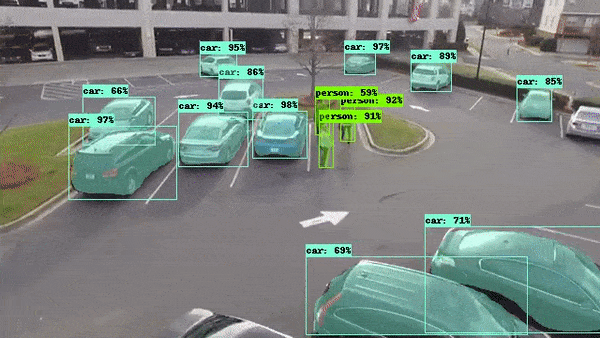In last week’s blog post we learned for Optical Character Recognition (OCR). We then applied the Tesseract program to test and evaluate the performance of the OCR engine on a very small set of example images. As our results demonstrated, Tesseract works best when there is a (very) clean segmentation of the foreground text from the background. In practice, it can be extremely challenging to guarantee these types of segmentations.
Hence, we tend to train domain-specific image classifiers and detectors. Nevertheless, it’s important that we understand how to access Tesseract OCR via the Python programming language in the case that we need to apply OCR to our own projects (provided we can obtain the nice, clean segmentations required by Tesseract). Example projects involving OCR may include that you wish to extract textual information from or perhaps you’re running a service that scans paper medical records and you’re looking to put the information into a HIPA-Compliant database. In the remainder of this blog post, we’ll learn how to install the Tesseract OCR + Python “bindings” followed by writing a simple Python script to call these bindings. By the end of the tutorial, you’ll be able to convert text in an image to a Python string data type. To learn more about using Tesseract and Python together with OCR, just keep reading.
4 days ago - Search for jobs related to Automatic license plate recognition using python. OCR text from table images to CSV - Python, OpenCV, Tesseract 6 days left. It should be open for customization for further training to increase the.
PS2: lihat post download emulator ps2; Catatan: Jika ada link yang mati harap lapor segera melalui kotak komentar ataupun fanspage blog hienzo. Semua Download Game PS2 ISO dan PS1 yang tersedia disini bisa anda unduh secara gratis dan tentunya full. Masih kurang dan game yang anda cari tidak ada dalam daftar? Silahkan ajukan Request. If there’s a broken link report it on the reuploads section.Not on the game’s post. Don’t request games/dlc/etc. Don’t promote other download sites.  Captain Tsubasa (NTSC-J)| ISO PS2 (Review): Captain Tsubasa is a PlayStation 2 videogame developed by Bandai Namco Games. It was released in Japan exclusively in October 19 2006. As with the rest of Bandai games, it's based on the anime version of Captain Tsubasa. PS2 GAME; Software. Sengoku BASARA 2 Heroes PS2 GAME ISO Captain Tsubasa PS2 GAME ISO WWE SmackDown! Here Comes the Pain PS2 G.
Captain Tsubasa (NTSC-J)| ISO PS2 (Review): Captain Tsubasa is a PlayStation 2 videogame developed by Bandai Namco Games. It was released in Japan exclusively in October 19 2006. As with the rest of Bandai games, it's based on the anime version of Captain Tsubasa. PS2 GAME; Software. Sengoku BASARA 2 Heroes PS2 GAME ISO Captain Tsubasa PS2 GAME ISO WWE SmackDown! Here Comes the Pain PS2 G.
Looking for the source code to this post? Using Tesseract OCR with Python This blog post is divided into three parts. First, we’ll learn how to install the so that we can access Tesseract via the Python programming language. Next, we’ll develop a simple Python script to load an image, binarize it, and pass it through the Tesseract OCR system. Finally, we’ll test our OCR pipeline on some example images and review the results.
To download the source code + example images to this blog post, be sure to use the “Downloads” section below. Installing the Tesseract + Python “bindings” Let’s begin by getting pytesseract installed. To install pytesseract we’ll take advantage of pip. If you’re using a virtual environment (which I highly recommend so that you can separate different projects), use the workon command followed by the appropriate virtual environment name. In this case, our virtualenv is named cv.

$ pip install pytesseract Note: pytesseract does not provide true Python bindings. Rather, it simply provides an interface to the tesseract binary. If you you’ll see that the library is writing the image to a temporary file on disk followed by calling the tesseract binary on the file and capturing the resulting output. This is definitely a bit hackish, but it gets the job done for us. Let’s move forward by reviewing some code that segments the foreground text from the background and then makes use of our freshly installed pytesseract. Applying OCR with Tesseract and Python Let’s begin by creating a new file named ocr.py. Args = vars ( ap.